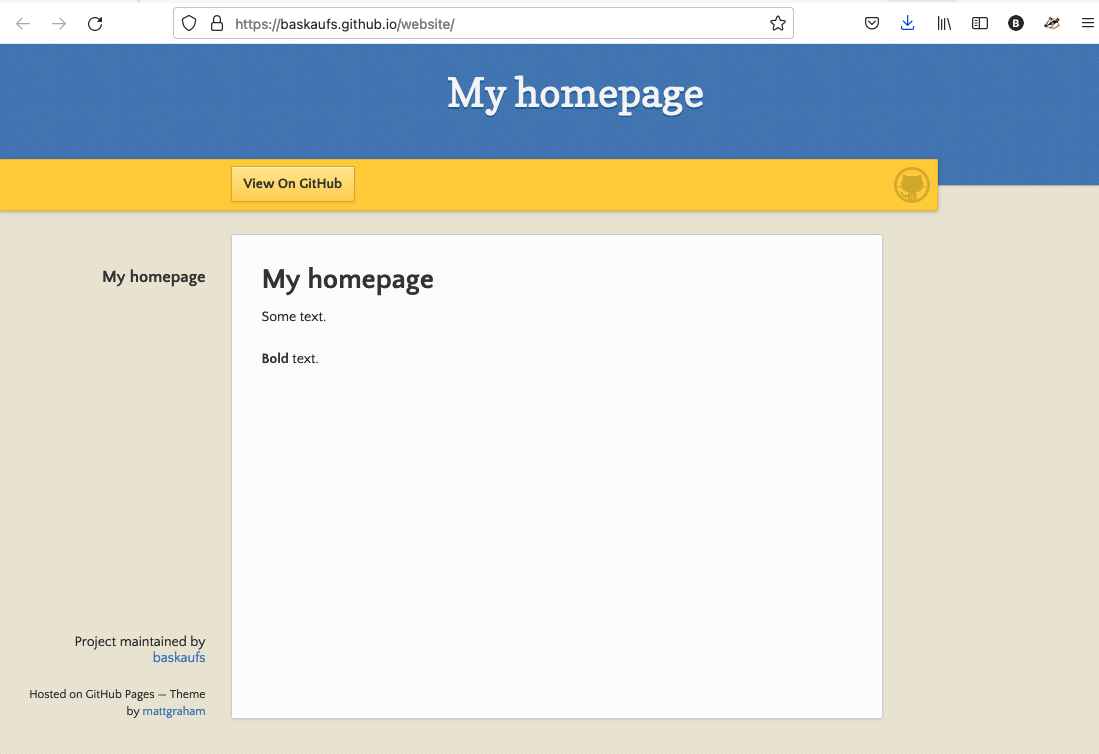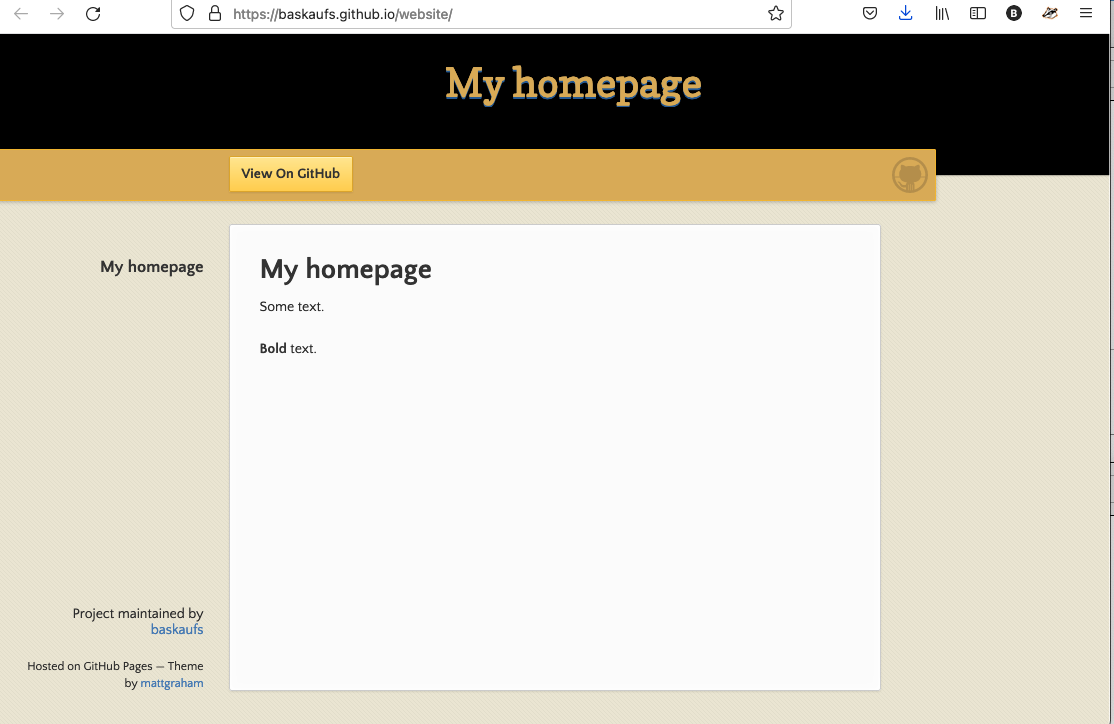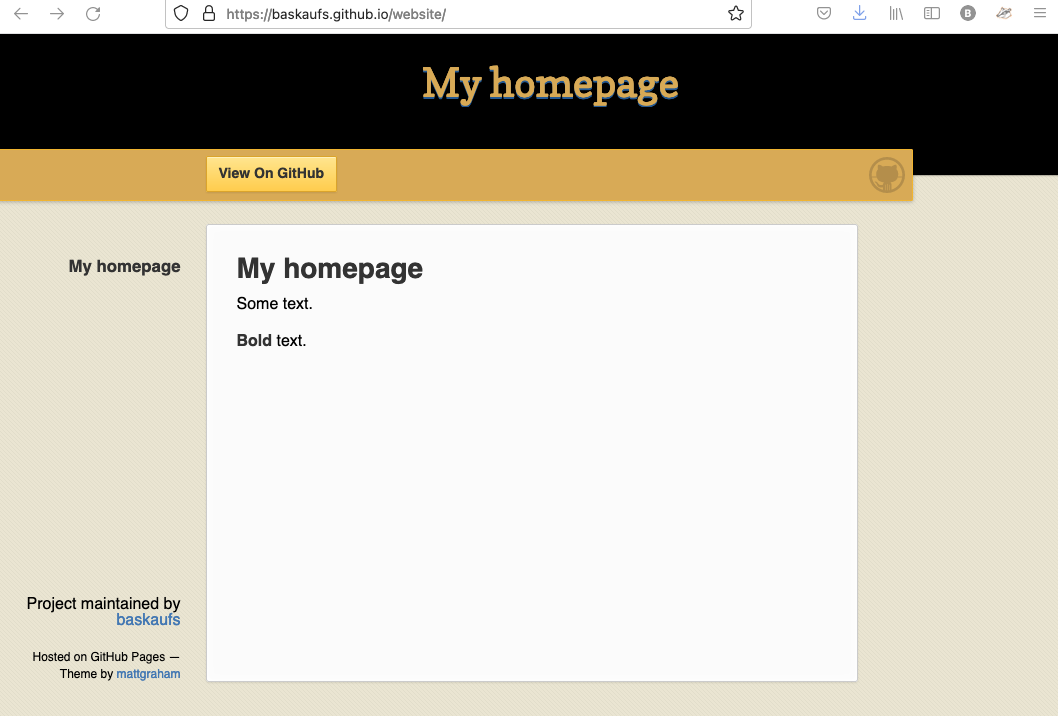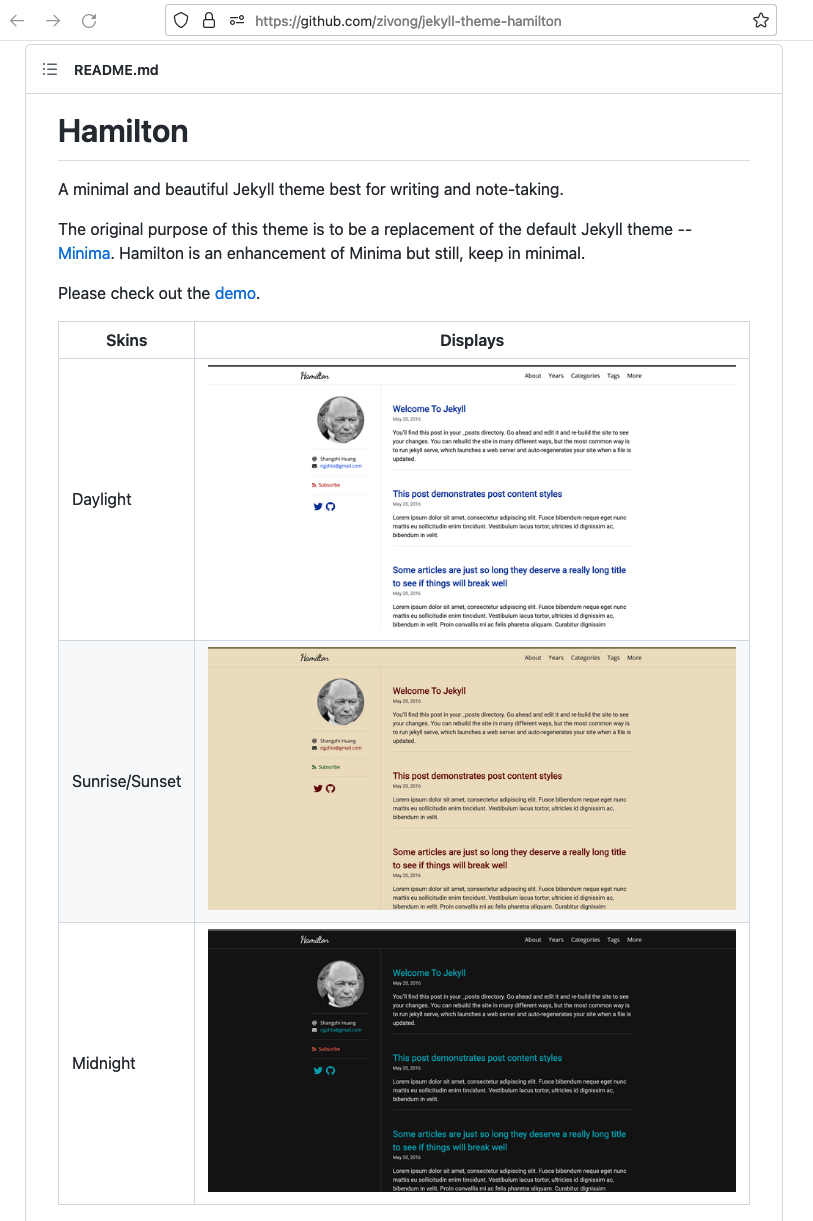return to: Creating a website with GitHub pages
Changing the styling of a remote theme
One of the reasons for creating a GitHub Pages website is to be able to pick a theme that already has the styling you want and avoid coding CSS yourself. However, sometimes a theme may be almost exactly what you want but needs a slight tweek to the styling, such as changing the default font or colors for the theme.
For example, this website is built using the built-in theme Leap Day. However, if you look at [the theme preview], you will see that there are a number of changes that have been made to the theme – most obviously the theme colors and font.
Here is a simple homepage using the Leap Day theme that I’ll use in the following examples:

Modifying the default stylesheet
The exact way to change the CSS depends on how complicated the theme is. The default styles are typically in a directory called _sass. There may be a number of files within that directory having .scss file extensions, so it can be a challenge to figure out which one to change. In the case of the Leap Day theme, there are relatively few in the _sass directory and the one that actually controlls things is
jekyll-theme-leap-day.scss.
To override the defaults, I add CSS code to a file in the /assets/css/ directory. In the case of Leap Day, there is only one file: style.scss, so the choice is easy.
The file as it currently stands has very little code in it:
---
---
@import 'jekyll-theme-leap-day';
I’ll download a copy of it locally in the same directory structure.

then edit it using my code editor. You can use the “inspect” feature of your browser to figure out what part of the CSS controls the different sections of the page. Once you’ve identified the HTML element you need to change, click on the element name and look in the CSS description for that element to see what setting needs to be changed. In most browsers, you can check or uncheck a box to turn settings on and off.
In this case, I see that the header element is the top bar with a level 1 (h1) header, and the #banner is the yellow bar below it. I can change their colors like this:

I chose the Vanderbilt brand colors black (#000000) and gold (#D8AB4C). After pushing the changes and reloading the page, the colors have changed.

If you want to change a value, you can set a new value in this file and it will override the defaults. However, if you want to remove a setting entirely, you need to use an unset value. For example, I think the font used in the body is hard to read. I can unset the font and leave it to the browser default, then change the font color to black using this CSS:
body {
font: unset;
color: #000000;
}
Now the page looks like this:

The entire CSS file now looks like this:
---
---
@import 'jekyll-theme-leap-day';
body {
font: unset;
color: #000000;
}
header {
background: #000000;
h1 {
color: #D8AB4C;
}
}
#banner {
background: #D8AB4C;
}
Finding the right file to change and digging into the CSS is not for the faint of heart. But if you can get help from someone with a little web design experience, it’s possible to make small changes like this.
Skins
In some cases, the theme developers make it easy for you to customize the appearance of the theme by providing pre-set themes. A theme is a selectable style that can easily be switched by a simple configuration change. Here is an example from the theme Hamilton:

I will switch to this theme by changing the theme designation in my _config.yml file to
remote_theme: zivong/jekyll-theme-hamilton
title: Test website
and adding a website title. The Hamilton theme is interesting because it changes the skin dynamically depending on the time of day. Here’s how it renders in the morning with the skin sunrise:

To set a specific skin, change the setting in _config.yml. For example, to use the skin midnight, add:
skin: midnight
Here’s how it looks after the change:

According to the instructions on the GitHub site, you can change the skin by creating a copy of an existing skin under a different name and then changing colors as desired. I created a directory called skins in the path /docs/_sass/hamilton/skins/, downloaded the midnight skin, and changed its name to pinky.scss.

I went to the W3Schools HTML Color Picker and clicked on Fuchsia, which has the code #ff00ff. I then edited the $background-color value in the pinky.scss file:

In _config.yml I changed the skin setting to:
skin: pinky
and pushed the changed files to GitHub. Now the homepage looks like this:

Probably needs a bit of work to be readable, but you get the idea.
Not every theme will make it this easy to customize its style. But by carefully examining the documentation on the theme’s GitHub page, you should have a pretty good idea of how much customization is possible with the theme.
return to: Creating a website with GitHub pages
Revised 2022-02-23

Questions? Contact us
License: CC BY 4.0.
Credit: "Vanderbilt Libraries Digital Lab - www.library.vanderbilt.edu"